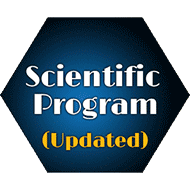
Andy Eyo
Chief Executive Officer (ECEWS) Akwa ibom State,Nigeria.
Title: Maximizing Early Infant Diagnosis opportunities through Dry Blood Spot Sample management using Mentor mother’s Approach in Rural HIV Clinics, South-Eastern Nigeria
Biography
Biography: Andy Eyo
Abstract
Pediatric HIV services in Nigeria lags behind that of adult services despite huge national effort to scale up services for HIV infected children. The link between the PMTCT of HIV program and pediatric services is weak due to poor knowledge in EID among health care workers especially in the rural areas where majority of Nigerians live.
PEPFAR CDC funded LOCATE project implemented by ECEWS, supported HIV services in 209 rural HIV clinics in Ebonyi, Enugu and Imo States, South-Eastern Nigeria since October, 2013. To address low EID services uptake, ECEWS worked with the supported rural HIV clinics to identify 35 Community Health workers (CHWs) who were trained as DBS mentors in January, 2014. This activity was aimed at reviewing the contribution of the DBS mentors on the overall EID services uptake over 12-month period (Jan. – Dec. 2014) following the intervention.
Methods:
The CHWs were mentored on proper method of DBS collection and charged with cascading the training to facility staff involved in the PMTCT/pediatric programs. ECEWS supported the freighting of the collected DBS to the nearest DNA PCR reference lab for analysis. Data obtained from the EID activities was documented using a generic DBS tracking tool. These data were collated and analyzed using Microsoft excel and SPSS data package.
Results:
3 months prior to the intervention, 20 HIV Exposed Infants(HEIs) delivered in the facilities had DBS collected and transferred to the DNA PCR reference lab out of which 2 results were received from the reference lab. Post intervention, 291 HEIs delivered in the facilities had DBS collected and transferred to the reference lab out of which 66 results were received from the reference lab.
Conclusions:
Building the capacity of the CHWs on DBS collection and transfer to the DNA PCR reference lab resulted in the observed increase in EID at ECEWS-supported rural HIV clinics.

